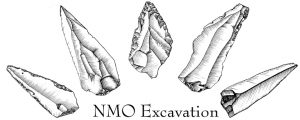Rebecca Biton, Gonen Sharon, Maya Oron, Tikvah Steiner, Rivka Rabinovich
Numerous sites showing human occupation during the Pleistocene were discovered at the Hula Valley — in the northern segment of the Jordan Valley, Israel. At the Middle Paleolithic site of Nahal Mahanayeem Outlet (NMO; OSL dated to ca. 65,000 B.P.), two testudine species were recovered, a freshwater turtle — the Western Caspian Turtle (Mauremys cf. rivulata), and a tortoise — the Mediterranean Spur-thighed Tortoise (Testudo graeca). The faunal and lithic assemblages were deposited during repeated short-term occupation events. The site was fast covered by mud deposited by rising water in the nearby paleo-Hula Lake, resulting in excellent preservation that provides a rare opportunity to reconstruct the process of procurement, use and eventual disposal of the testudines
step-by-step. Evidence of consumption of the Mediterranean Spur-thighed and its carapace exists from the late Lower Paleolithic onward, however, no systematic exploitation of the Western Caspian Turtle has been reported to date from any Pleistocene archaeological sites in the Levant. This is the first and earliest evidence of butchering of the freshwater turtle, M. cf. rivulata, at a Levantine Paleolithic site. Based on detailed taxonomic identification and taphonomic analysis, we suggest that both species were exploited in a similar way at NMO.
Their limbs were torn apart, and then the bridge connecting the carapace and plastron was broken. Stone tools were used to separate visceral tissues from the peripheral bones in order to detach the meat. However, due to the different shell thickness, the survival rate of the bridge area varies slightly between the two species. Finally we would like to draw attention to the presence of pits mimicking man-made percussion notches on the shells of extant specimen of both species, advocating caution when identifying percussion signs in the fossil record.
